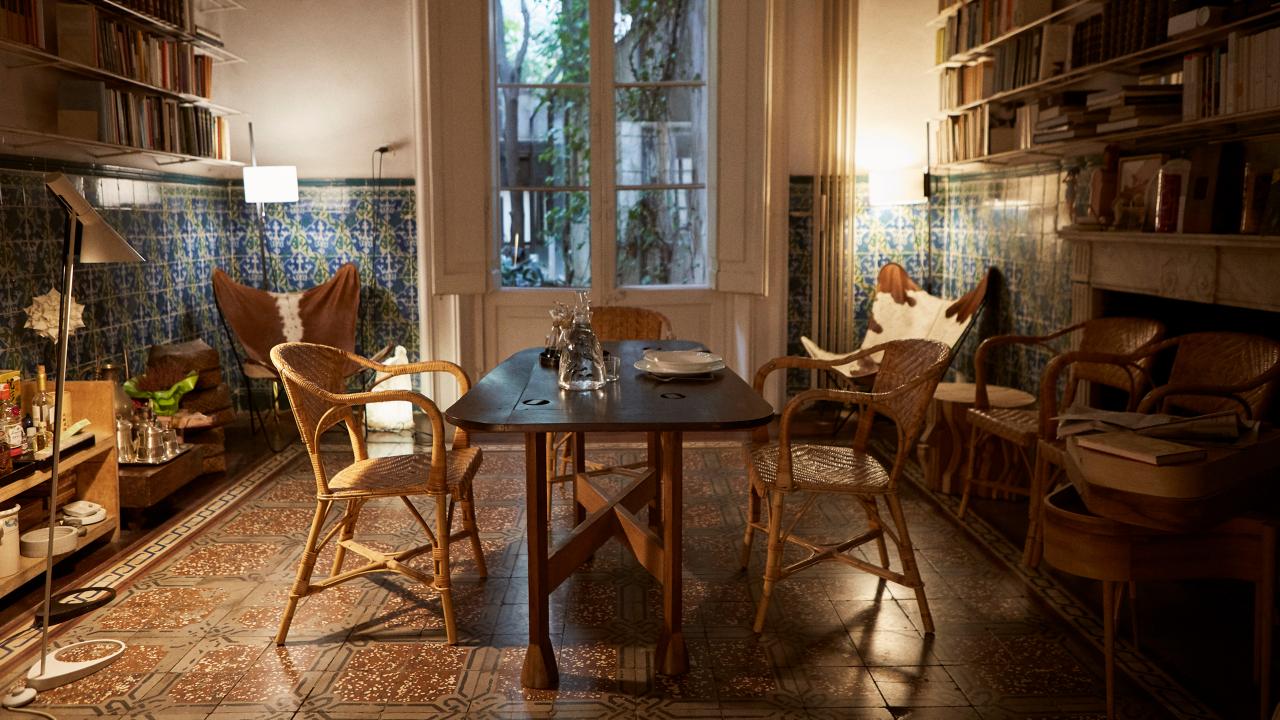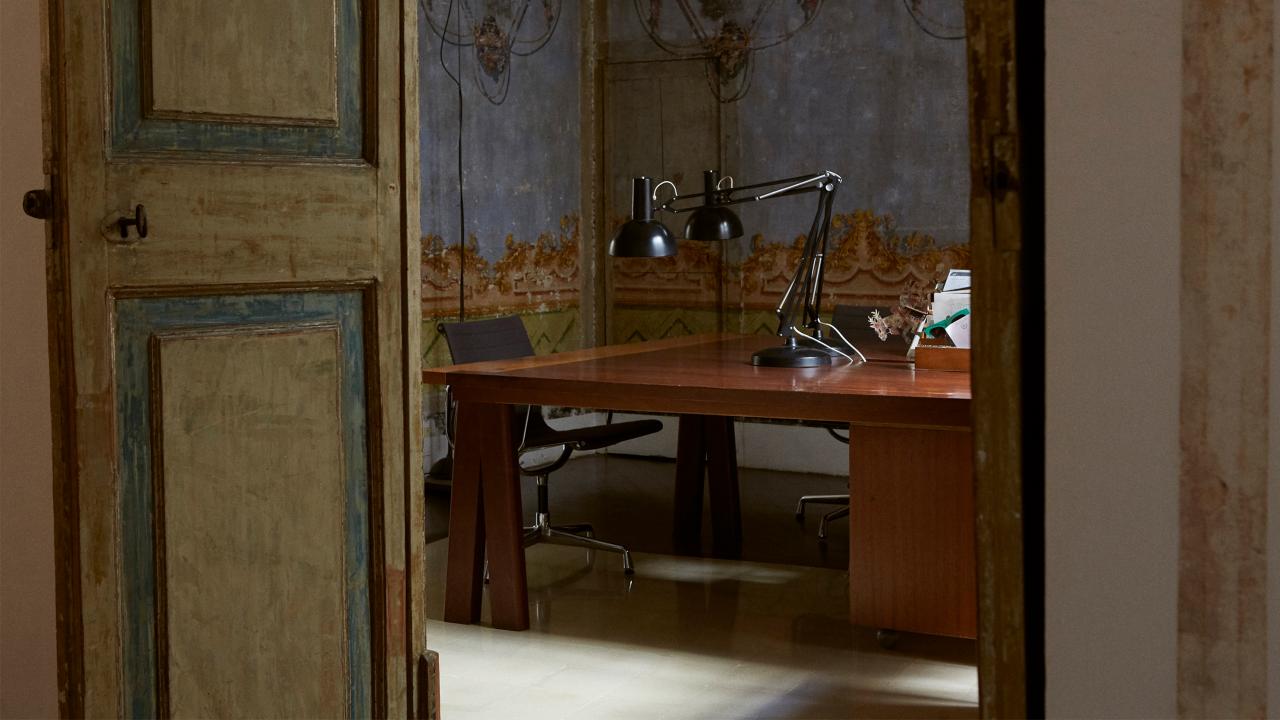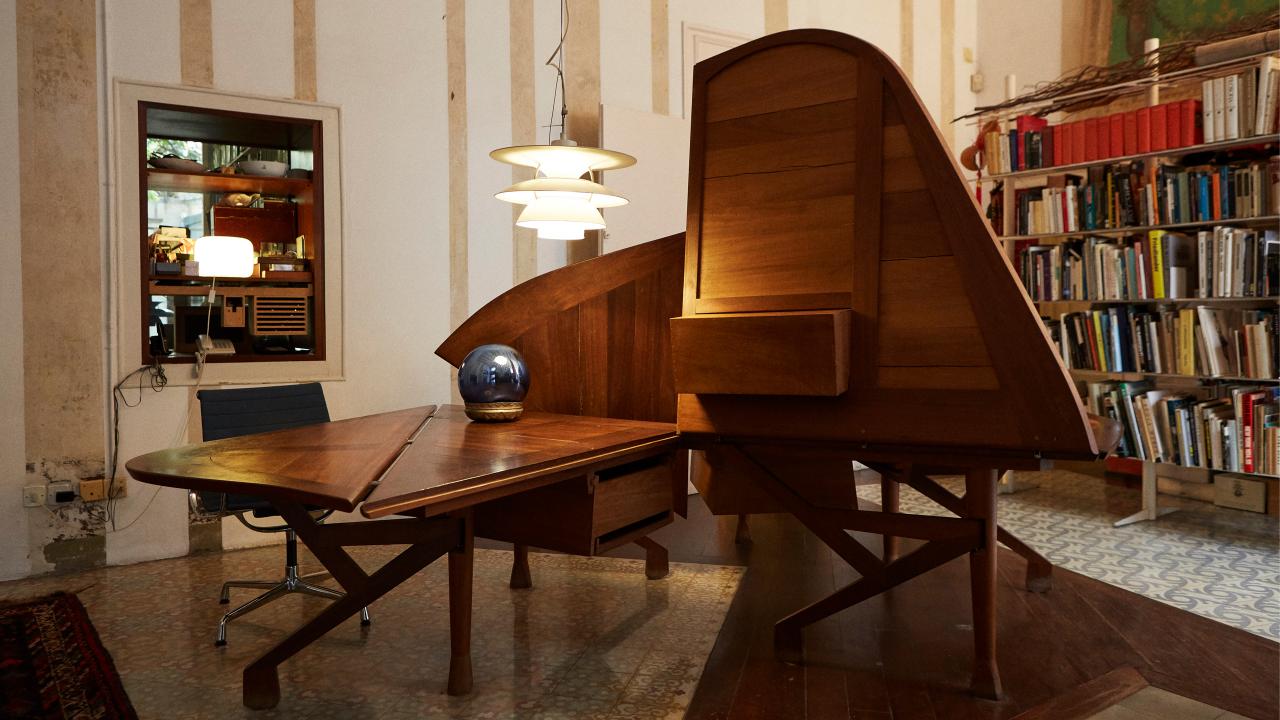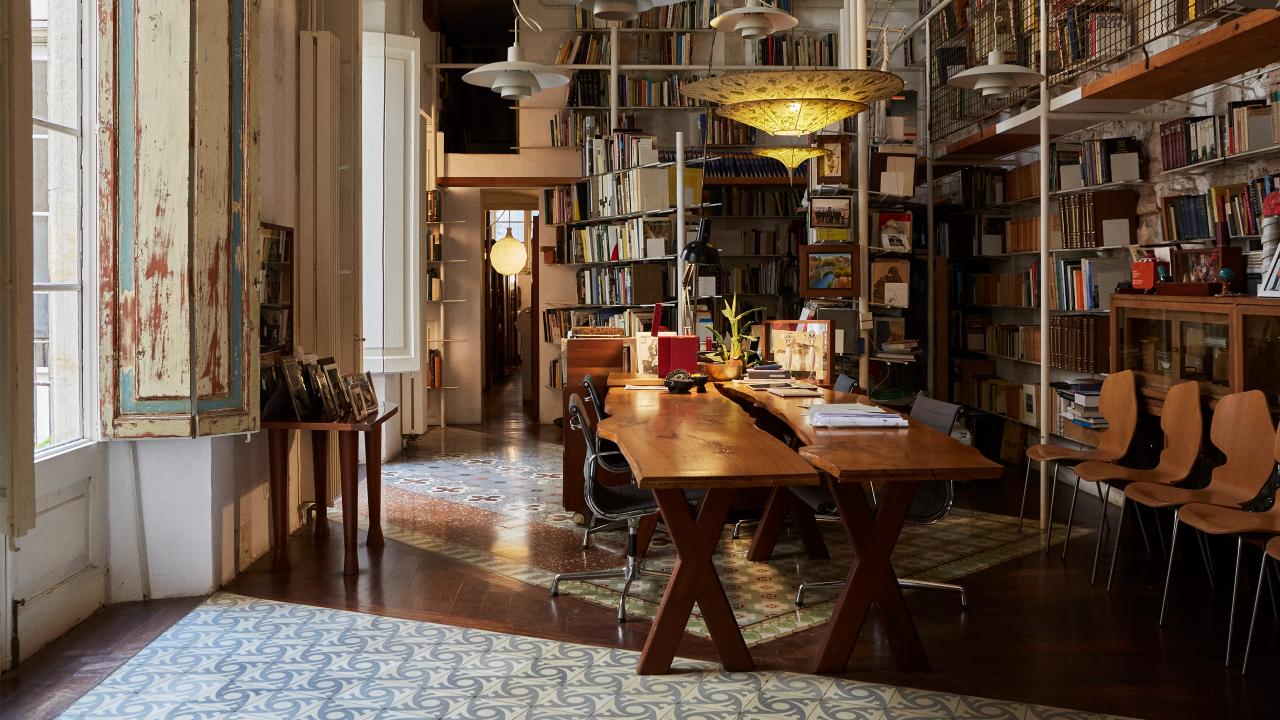IN CONVERSATION WITH BENEDETTA TAGLIABUE
One of the things the exhibition illustrates is that rather than using furniture design as a way of working on new ideas for buildings, Miralles’ pieces were deeply personal, a physical expression of the divide between work and domestic life. ‘We were doing the transformation of this old house with no plans. We had an office where everything was drawn perfectly,’ confirms Tagliabue, ‘but while we were doing the house we worked in a very different way. At the beginning, we said that this was our home and it’s not going to be published. You have fewer constraints when you’re doing something for yourself. You’re really serving yourself as a client.’
As a result, the original drawings weren’t carefully stored in the Miralles archive, although Tagliabue has been able to dig out a few old fax and photo-copied versions. ‘We didn’t have the sense that this could be important,’ she laughs. To prove her point, during her research she stumbled across the drawing of a table in an old notebook. Thinking it was a reference to another piece, she took a photo and sent it to the studio. ‘I didn’t pay too much attention to it,’ she says. It was only when colleagues examined the photograph properly that they realised it was a new design, the Mistery table. ‘I never knew about the existence of this table and it must have been one of the last pieces Enric was thinking about because he never discussed it with me. So we are intrigued.’
She also had to carefully consider which type of timber to use for the new pieces. ‘It wasn’t easy,’ she says. ‘It was about re-interpreting the type of wood the furniture was asking for. If we’d had other choices maybe we would have built them for different timbers in the first instance.’ Originally the Ines table, for example, was made in oak and iroko, partly because the house was full of those timbers already. This time though she elected to build it in red oak. ‘It was great to have that variation,’ she says, ‘and I’m sure Enric would have loved it. Not to do exactly the same thing but to make a slight difference.’ On other occasions, her decisions were more practical – the collection contains drawing tables, for example, where the wood needed to deliver a smooth hard surface, and of course there is no timber to match hard maple when it comes to this kind of performance.
Something all the pieces have in common is a sense of movement. The Miralles house had no internal walls or partitions and, as a result, all the furniture he designed needed to be flexible, he loved the idea of pieces that could appear, disappear or change shape and transform their living space. So Tropical is a dining table (made of red oak) that collapses into a coffee table; the extraordinary Ines table has a total of 20 (count ‘em) possible positions that create areas for privacy; and Dolmen, made from American cherry and tulipwood, morphs from a reasonably conventional-looking desk into something that resembles a horse rearing on its hind legs.
Twenty years is a long time. And it’s telling perhaps that, while the furore over the cost of the Scottish Parliament building is long-forgotten, the legacy of its architect remains fresh in many minds. ‘When he disappeared, I felt it was really not just,’ concludes Tagliabue. ‘I was always very clear that I wanted to give him a chance to show more than he could during his life, because his life was so brief. I had to find the moment.’
As the world continues to find its collective feet after the most traumatic of years, it feels like the perfect time to celebrate the work of a man who brought so much joy with the sensitivity and poetry of his buildings. Moment found.
words by Grant Gibson




